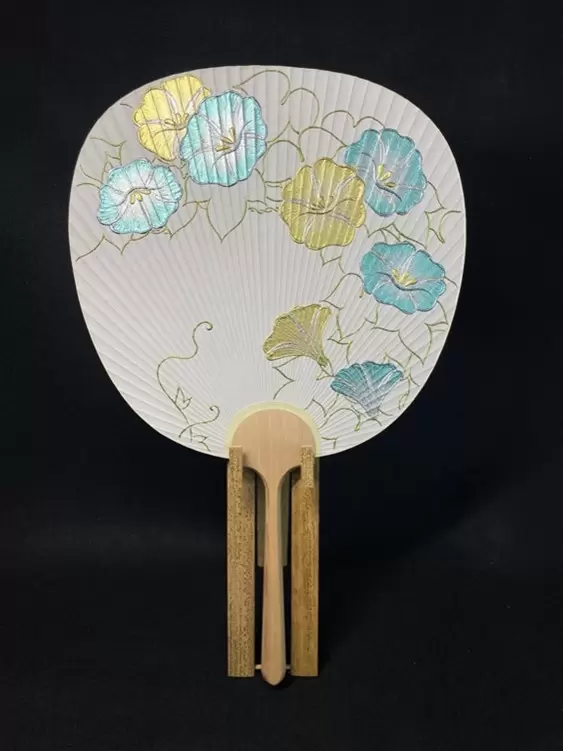[Kyoto, Nijo] Tanaka Kinsai Kogei: A contemporary art piece that connects traditional techniques revived in the early Showa period to the future
![[Kyoto, Nijo] Tanaka Kinsai Kogei: A contemporary art piece that connects traditional techniques revived in the early Showa period to the future](https://resources.matcha-jp.com/resize/720x2000/2024/10/18-203389.webp)
Hello! This time, CEC members visited Tanaka Kinsai Kogei, located near JR Nijo Station. Founded in Kyoto over 100 years ago, the shop has been continued by four generations and offers visitors the chance to experience the world of Kyoto hand-painted yuzen gold leaf crafts.
What is Kinsai Kogei?
Gold leaf is a technique of decorating a variety of items using adhesive processing of gold or silver foil or gold powder, and is used not only on fabrics but also on folding screens, tableware and a variety of other items.
Applying gold leaf to the fabric makes it look gorgeous and gorgeous, creating a kimono that will captivate the hearts of those who see it. The lines drawn are fine and delicate, and this is a traditional craft that requires advanced skills.
(The top two are gold leaf applied to fabric.)


(Gold leaf decoration on a fan)


Tanaka Kinsai Kogei has traditionally focused on Yuzen-dyed fabrics, but the two brothers who are the fourth generation to take over the business are exploring new possibilities and passing on the techniques to the future.
The photo shows Tanaka Eito, a fourth-generation gold leaf craftsman.

The "Tsutsugaki" technique produces fine gold lines
One of the techniques for gold leaf is "Tsutsugaki." It has a long history, originally based on a technique called "Itome," in which outlines were drawn with glue between patterns in Yuzen dyeing, allowing different colors to be dyed, and the white outlines that were created were then traced with gold lines. It gained popularity and was at its peak for a time, but the technique seems to have disappeared for about 60 years after that. However, the artisans who had been using glue at the time wanted to revive the technique, and it was revived in the early Showa period.


We were also shown the "tube" at the end of the "tsutsugaki." Each craftsman makes an original one to suit his or her hand. It's like the tip of the icing for iced cookies or whipped cream.

You can experience gold leaf at the workshop.
Gold leaf painting requires skilled techniques, and you can try your hand at this technique at the workshop.
To make a tote bag, you will use a prepared stencil, print glue onto it, and then attach colored foil to create your own original bag.


There are so many beautifully designed patterns that are typical of Japan that it's hard to choose.
The photo shows colored foil.

You can experience making works that look like modern art in our workshops!
This time, we have prepared a special workshop for the CEC tour!

A workshop where participants can make business card-sized wooden boxes with Tsutsugaki decoration.
(Note) The photo shows a different wooden box. The actual box will be business card sized and have a different design.
The undulating wave pattern of "mizugoromo" is a classic pattern that is also used on obi and other items. It has a very stylish finish that is like modern art. It is sure to please overseas guests.
The photo shows an obi sash decorated with "mizugoromo." Tsutsugaki is a somewhat difficult technique for beginners, but we encourage you to give it a try.

The future of gold leaf craft is bright!
The gold leaf technique was developed over time, and after it went out of fashion, it has been revived. Its technical skill and high design quality are undeniable, and I believe it should be passed down.
In the future, I would love to see more gold leaf designs applied to things I can't even imagine.
The iris (photo below) was painted from scratch by Tanaka Eito and is entirely decorated with gold leaf.

-------
Tanaka Gold Painting Crafts
Address: 812-34 Higashiiri Chikaracho, Kamigyo Ward, Kyoto City, Kyoto Prefecture
Phone: 075-821-0873
Access: 12 minutes on foot from JR Nijo Station
Website: https://tanaka-kinsai-craft.com/
-------
For guided tours and inquiries in Kyoto , please contact us here (https://www.cec-kyoto.jp/) .
Our "ambassadors" will guide you through Kyoto's cultural tourism in a variety of languages, drawing on their own experiences and knowledge. We can accommodate requests for standard courses or special, bespoke one-day courses, to help you create unforgettable days in Kyoto, providing you with the opportunity to learn about and experience shrines, temples, and gardens, modern architecture, food culture, traditional performing arts, and more, as well as meet the local encounters that will create the best memories. In addition to guided tours, we offer special experiences, from events utilizing unique venues to plans that allow you to fully enjoy Kyoto culture throughout the seasons.
The contents on this page may partially contain automatic translation.































![[2026] Top 5 Strawberry Picking Spots in Tokushima, Naruto| Farms and Access Guide for January to May](https://resources.matcha-jp.com/resize/720x2000/2025/03/06-227165.webp)
![[Yamanashi/ Hokuto City] 4 Hot New Spots Opening in 2026](https://resources.matcha-jp.com/resize/720x2000/2025/12/12-252747.webp)


